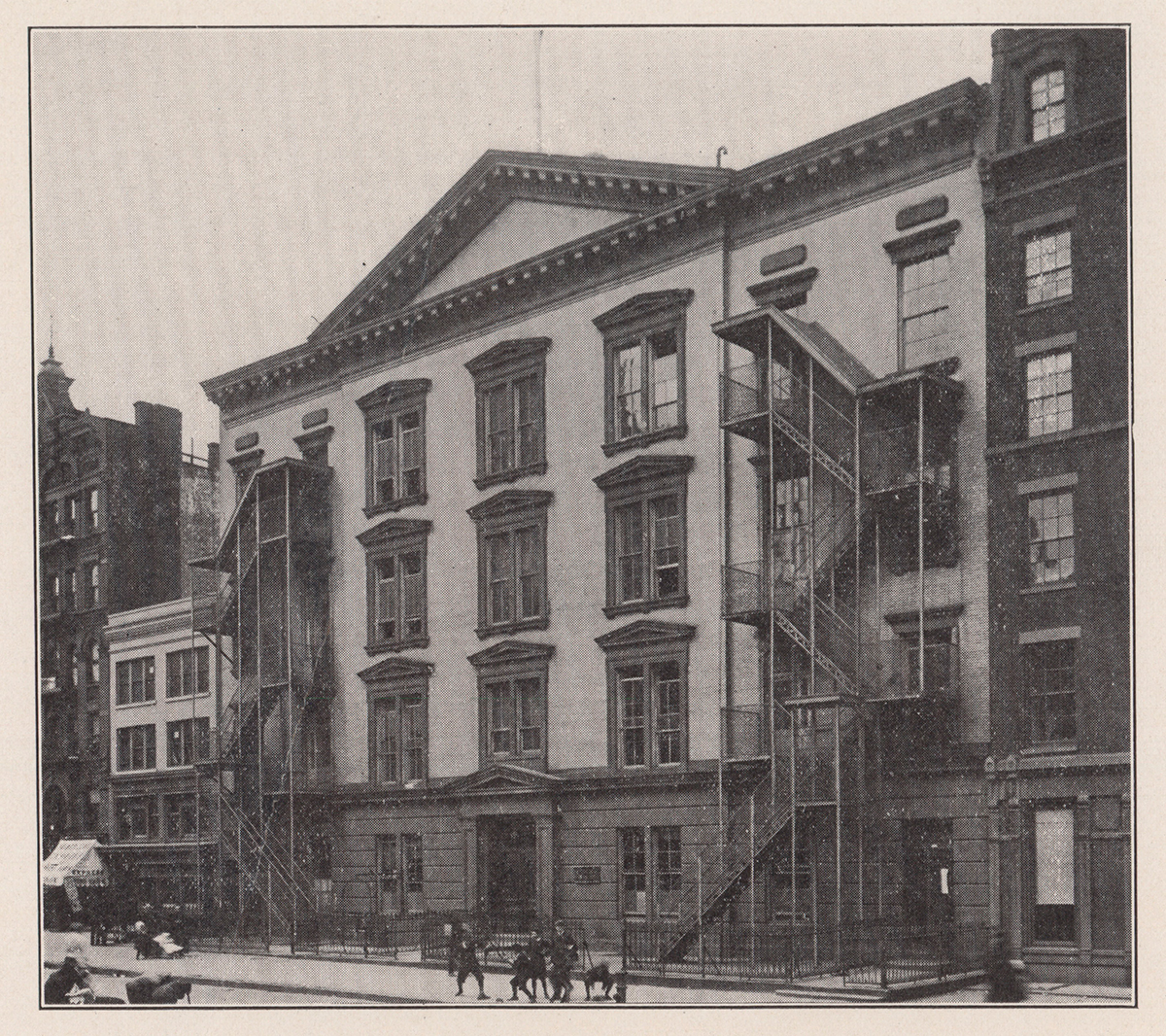You are here:
Public School 47

Date: undated, c. 1908
Caption: Public School 47 was New York City’s first public school for Deaf children.

New York City’s Public School 47 opened in 1908. It was the city’s first public school for Deaf children, and students came to the school on East 23rd Street from all over the city. Some lived at the school, while others commuted from their homes.1 Other Deaf students in New York City attended other private or religious schools, but they did not typically attend schools alongside hearing pupils.
The New York Times explained that the new school would offer children “a three year course, so that at the end of that time they may be able to enter the regular classes of the schools and, in spite of their physical handicap, benefit by general instruction.”2
In 1998, P.S. 47 became one of the first schools in the country to teach students primarily through American Sign Language. Before that time, though, the school prohibited students from signing, choosing “oralism” instead. Students needed to learn to speak out loud in English and to read lips to communicate, teachers argued.3
Does that mean that no students signed to communicate at school? Probably not. Sara Uhlberg, who attended the Lexington School for the Deaf, also in Manhattan, recalled her years there as a boarding student, meaning that she stayed at school overnight. “When the lights were turned out, we went to the bathroom, where a light was always on, and we talked till our eyes refused to stay open. We loved to talk to one another in our language. We lived for sign, and the ability to communicate with one another was like the water of life, our oasis of language and meaning, in the midst of the huge expanse of desert silence and incomprehension that was the greater hearing world.”4
-
“New York City’s Schools and What They Cost,” The New York Times, September 13, 1908, Section M. ↩︎
-
“New York City’s Schools and What They Cost,” The New York Times. ↩︎
-
David Firestone, “Deaf Students Protest New School Head,” The New York Times, April 27, 1994, Section B. ↩︎
-
Myron Uhlberg, Hands of my Father: A Hearing Boy, His Deaf Parents, and the Language of Love (London: Bantam, 2008). ↩︎
Categories: Manhattan, K-12 organizing"
Tags: Deaf culture, Disabled people, school facilities, photography, imagery, and visual representation, racist segregation, American Sign Language, curriculum
This item is part of "Deaf Social Spaces" in "Joyful Struggle"
Item Details
Date: undated, c. 1908
Source: Municipal Archives of the City of New York, Digital Collections
Copyright: Under copyright. Used with permission. Courtesy of the Municipal Archives of the City of New York.
How to cite: “Public School 47,” in New York City Civil Rights History Project, Accessed: [Month Day, Year], https://nyccivilrightshistory.org/gallery/ps47.
Questions to Consider
- Why do you think P.S. 47 and other schools for deaf students emphasized lip-reading and speaking rather than sign language? How did this relate to the school’s plan to have students “enter the regular classes…and benefit by general instruction”?
- Sara Uhlberg described signing as “like the water of life, our oasis of language and meaning.” But it was an oasis that she had to break school rules to find. What is your “oasis of language and meaning”? Does it connect to your life at school, or not?
- How is language, or how can it be, about joy? How can it be about struggle or politics?
References
How to Print this Page
- Press Ctrl + P or Cmd + P to open the print dialogue window.
- Under settings, choose "display headers and footers" if you want to print page numbers and the web address.
- Embedded PDF files will not print as part of the page. For best printing results, download the PDF and print from Adobe Reader or Preview.
